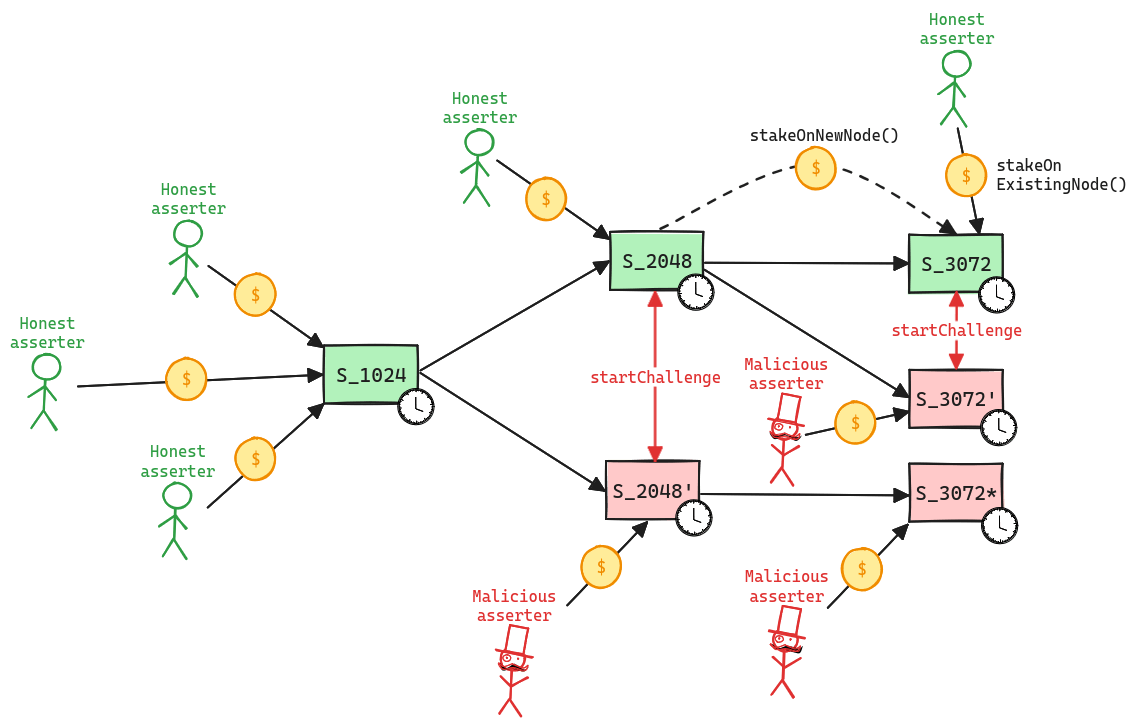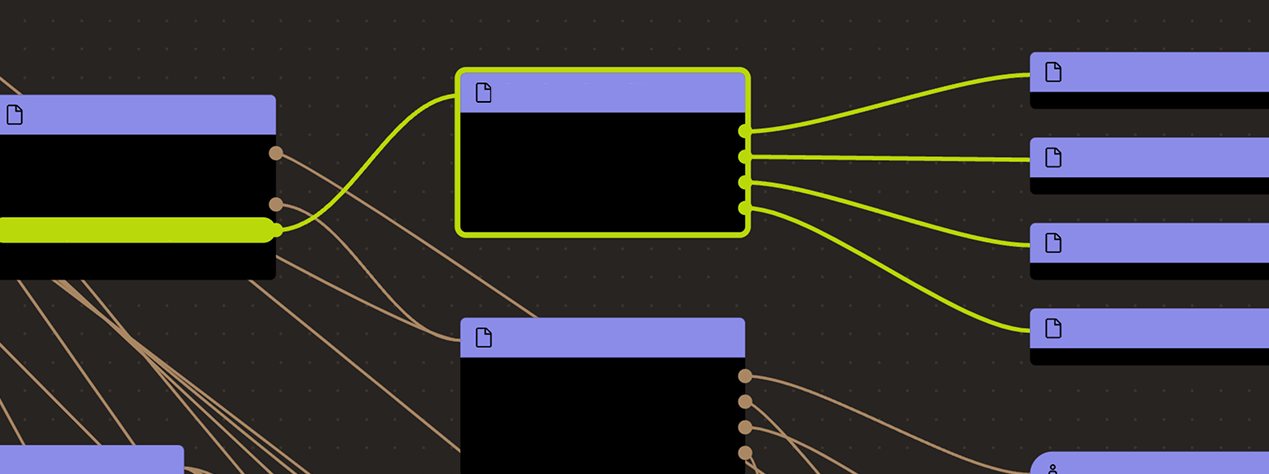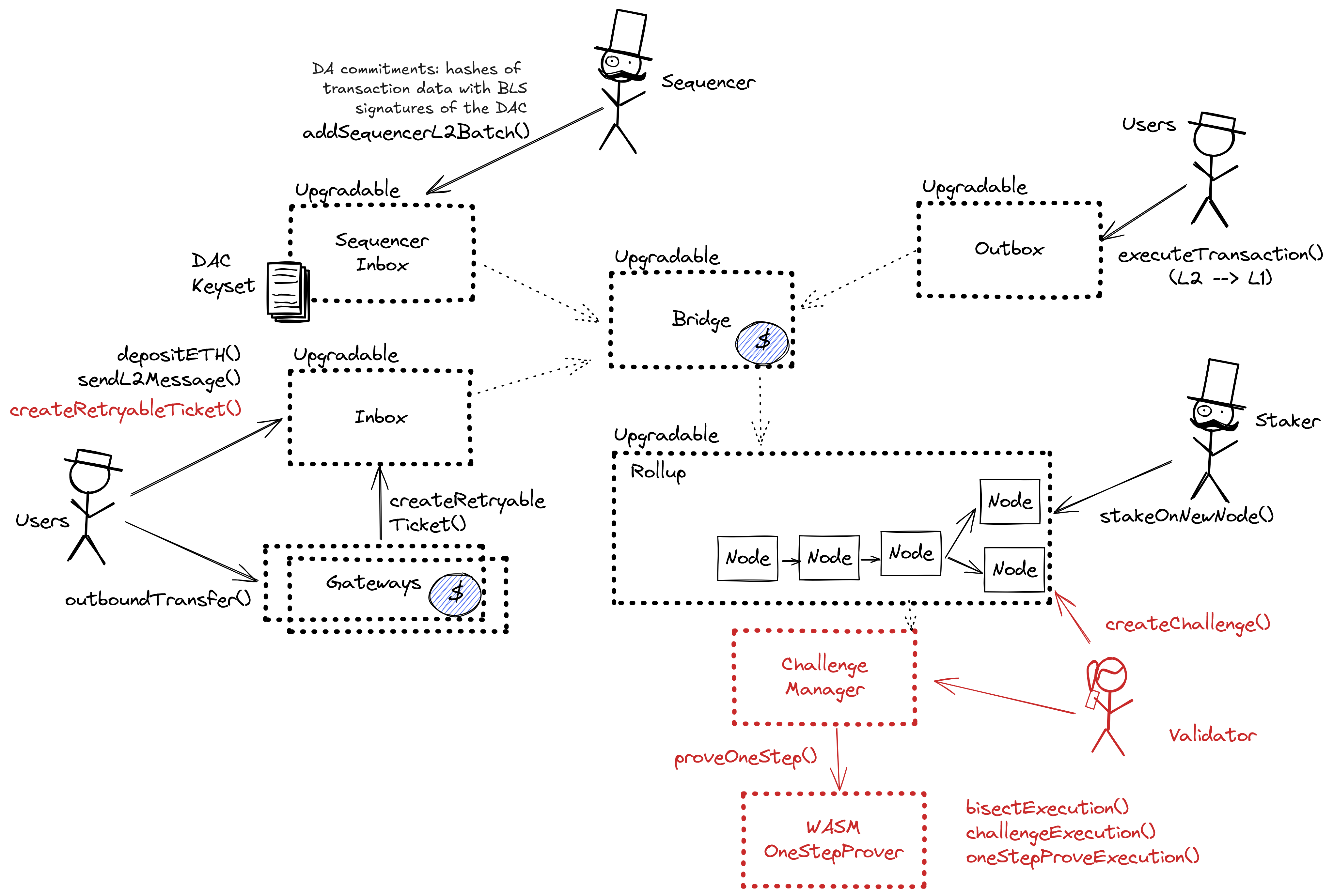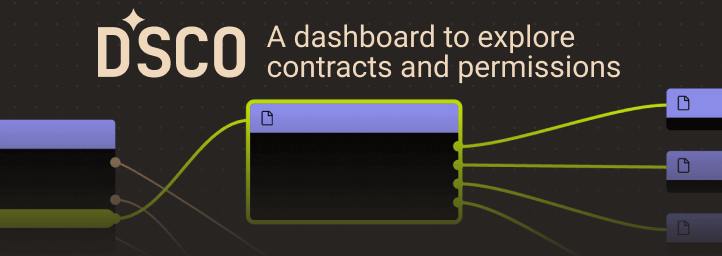Search
Search for projects by name
 Plume Network
Plume Network
Badges
About
Plume is a modular L2 blockchain for real-world assets (RWAs) that integrates asset tokenization and compliance providers directly into the chain.
Badges
About
Plume is a modular L2 blockchain for real-world assets (RWAs) that integrates asset tokenization and compliance providers directly into the chain.
Why is the project listed in others?
Consequence: projects without a sufficiently decentralized set of challengers rely on few entities to safely update the state. A small set of challengers can collude with the proposer to finalize an invalid state, which can cause loss of funds.
Consequence: projects without a sufficiently decentralized data availability committee rely on few entities to safely attest data availability on Ethereum. A small set of entities can collude with the proposer to finalize an unavailable state, which can cause loss of funds.
Learn more about the recategorisation here.
2025 Feb 20 — Dec 20
The section shows the operating costs that L2s pay to Ethereum.
2025 Feb 20 — Dec 20
This section shows how much data the project publishes to its data-availability (DA) layer over time. The project currently posts data to![]() Celestia.
Celestia.
2025 Jun 03 — Dec 20
This section shows how "live" the project's operators are by displaying how frequently they submit transactions of the selected type. It also highlights anomalies - significant deviations from their typical schedule.
Plume Network stops using Celestia
2025 Nov 18th
Plume Network stops using Celestia and switches to ArbOS v32 with a DAC for data availability.
Plume Network starts using Blobstream
2025 May 8th
Upgraded ChallengeManager contract to the version that uses Celestia with Blobstream bridge.
Funds can be stolen if
Funds can be lost if
Users can be censored if
MEV can be extracted if
Fraud proofs allow 9 WHITELISTED actors watching the chain to prove that the state is incorrect. There are fewer than 5 Challengers external to the Operator among these. Interactive proofs (INT) require multiple transactions over time to resolve. There is a 5d 14h challenge period.
Proof construction relies fully on data that is NOT published onchain. There exists a Data Availability Committee (DAC) with a threshold of 1/1 that is tasked with protecting and supplying the data.
There is no window for users to exit in case of an unwanted regular upgrade since contracts are instantly upgradable.
Anyone can become a Proposer after 11d 23h of inactivity from the currently whitelisted Proposers.
Data is not stored on chain
Users transactions are not published onchain, but rather sent to external trusted parties, also known as committee members (DAC). Members of the DAC collectively produce a Data Availability Certificate (comprising BLS signatures from a quorum) guaranteeing that the data behind the new transaction batch will be available until the expiry period elapses (currently a minimum of two weeks). This signature is not verified by L1, however external Validators will skip the batch if BLS signature is not valid resulting. This will result in a fraud proof challenge if this batch is included in a consecutive state update. It is assumed that at least one honest DAC member that signed the batch will reveal tx data to the Validators if Sequencer decides to act maliciously and withhold the data. If the Sequencer cannot gather enough signatures from the DAC, it will “fall back to rollup” mode and by posting the full data directly to the L1 chain. The current DAC threshold is 1 out of 1.
Funds can be lost if the external data becomes unavailable (CRITICAL).
Users can be censored if the committee restricts their access to the external data.

Updates to the system state can be proposed and challenged by a set of whitelisted validators. If a state root passes the challenge period, it is optimistically considered correct and made actionable for withdrawals.
Whitelisted validators propose state roots as children of a previous state root. A state root can have multiple conflicting children. This structure forms a graph, and therefore, in the contracts, state roots are referred to as nodes. Each proposal requires a stake, currently set to 0.1 ETH, that can be slashed if the proposal is proven incorrect via a fraud proof. Stakes can be moved from one node to one of its children, either by calling stakeOnExistingNode or stakeOnNewNode. New nodes cannot be created faster than the minimum assertion period by the same validator, currently set to 15m. The oldest unconfirmed node can be confirmed if the challenge period has passed and there are no siblings, and rejected if the parent is not a confirmed node or if the challenge period has passed and no one is staked on it.
Funds can be stolen if none of the whitelisted verifiers checks the published state. Fraud proofs assume at least one honest and able validator (CRITICAL).
A challenge can be started between two siblings, i.e. two different state roots that share the same parent, by calling the startChallenge function. Validators cannot be in more than one challenge at the same time, meaning that the protocol operates with partial concurrency. Since each challenge lasts 5d 14h, this implies that the protocol can be subject to delay attacks, where a malicious actor can delay withdrawals as long as they are willing to pay the cost of losing their stakes. If the protocol is delayed attacked, the new stake requirement increases exponentially for each challenge period of delay. Challenges are played via a bisection game, where asserter and challenger play together to find the first instruction of disagreement. Such instruction is then executed onchain in the WASM OneStepProver contract to determine the winner, who then gets half of the stake of the loser. As said before, a state root is rejected only when no one left is staked on it. The protocol does not enforces valid bisections, meaning that actors can propose correct initial claim and then provide incorrect midpoints.
The system has a centralized sequencer
While forcing transaction is open to anyone the system employs a privileged sequencer that has priority for submitting transaction batches and ordering transactions.
MEV can be extracted if the operator exploits their centralized position and frontruns user transactions.
Users can force any transaction
Because the state of the system is based on transactions submitted on the underlying host chain and anyone can submit their transactions there it allows the users to circumvent censorship by interacting with the smart contract on the host chain directly. After a delay of 1d in which a Sequencer has failed to include a transaction that was directly posted to the smart contract, it can be forcefully included by anyone on the host chain, which finalizes its ordering.
Delayed forced transactions
To force transactions from the host chain, users must first enqueue “delayed” messages in the “delayed” inbox of the Bridge contract. Only authorized Inboxes are allowed to enqueue delayed messages, and the so-called Inbox contract is the one used as the entry point by calling the sendMessage or sendMessageFromOrigin functions. If the centralized sequencer doesn’t process the request within some time bound, users can call the forceInclusion function on the SequencerInbox contract to include the message in the canonical chain. The time bound is hardcoded to be 1d.
Autonomous exit
Users can (eventually) exit the system by pushing the transaction on L1 and providing the corresponding state root. The only way to prevent such withdrawal is via an upgrade.
EVM compatible smart contracts are supported
Arbitrum One uses Nitro technology that allows running fraud proofs by executing EVM code on top of WASM.

Ethereum
Roles:
Actors:
A Multisig with 4/10 threshold.
- Can upgrade with no delay
- GatewayRouter UpgradeExecutor → ProxyAdmin
- Bridge UpgradeExecutor → ProxyAdmin
- RollupProxy UpgradeExecutor
- Outbox UpgradeExecutor → ProxyAdmin
- SequencerInbox UpgradeExecutor → ProxyAdmin
- ChallengeManager UpgradeExecutor → ProxyAdmin
- Inbox UpgradeExecutor → ProxyAdmin
- UpgradeExecutor UpgradeExecutor → ProxyAdmin
- ERC20Gateway UpgradeExecutor → ProxyAdmin
- RollupEventInbox UpgradeExecutor → ProxyAdmin
- Can interact with RollupProxy
- Pause and unpause and set important roles and parameters in the system contracts: Can delegate Sequencer management to a BatchPosterManager address, manage data availability, DACs and the fastConfirmer role, set the Sequencer-only window, introduce an allowList to the bridge and whitelist Inboxes/Outboxes UpgradeExecutor
Participants (10):
0x2103…911c0x65D1…60070x8117…E7Ac0xA073…bda20xF331…647D0xa400…e6e40x3840…Fd5f0xa0C6…90380xefCf…dD5C0x4D80…5BAeA Multisig with 4/6 threshold.
- Can upgrade with no delay
- EthereumBlobstream
- Can interact with EthereumBlobstream
- can freeze the bridge contract and update the list of authorized relayers
- A Validator - acting directly
- A Sequencer - acting directly
- Can interact with EthereumBlobstream
- it is a ‘Relayer’ and can call commitHeaderRange() to commit block ranges. Since adding and removing Relayers emits no events, there can be more relayers than are presented here
Arbitrum One
Actors:
A Multisig with 4/6 threshold.
- Can upgrade with no delay
- ArbitrumBlobstream
- Can interact with ArbitrumBlobstream
- can freeze the bridge contract and update the list of authorized relayers
- Can interact with ArbitrumBlobstream
- it is a ‘Relayer’ and can call commitHeaderRange() to commit block ranges. Since adding and removing Relayers emits no events, there can be more relayers than are presented here
Base Chain
Actors:
A Multisig with 4/6 threshold.
- Can upgrade with no delay
- BaseBlobstream
- Can interact with BaseBlobstream
- can freeze the bridge contract and update the list of authorized relayers
- Can interact with BaseBlobstream
- it is a ‘Relayer’ and can call commitHeaderRange() to commit block ranges. Since adding and removing Relayers emits no events, there can be more relayers than are presented here


Ethereum
Central contract for the project’s configuration like its execution logic hash (wasmModuleRoot) and addresses of the other system contracts. Entry point for Proposers creating new Rollup Nodes (state commitments) and Challengers submitting fraud proofs (In the Orbit stack, these two roles are both held by the Validators).
- Roles:
- admin: UpgradeExecutor; ultimately Conduit Multisig 1
- owner: UpgradeExecutor; ultimately Conduit Multisig 1
- validators: EOA 1, EOA 11, EOA 12, EOA 13, EOA 18, EOA 2, EOA 3, EOA 6, EOA 7
A sequencer (registered in this contract) can submit transaction batches or commitments here.
- Roles:
- admin: ProxyAdmin; ultimately Conduit Multisig 1
- batchPosters: EOA 10, EOA 14, EOA 15, EOA 16, EOA 17, EOA 4, EOA 5, EOA 8, EOA 9
Contract that allows challenging state roots. Can be called through the RollupProxy by Validators or the UpgradeExecutor.
- Roles:
- admin: ProxyAdmin; ultimately Conduit Multisig 1
Central contract defining the access control permissions for upgrading the system contract implementations.
- Roles:
- admin: ProxyAdmin; ultimately Conduit Multisig 1
- executors: Conduit Multisig 1
Escrows deposited ERC-20 assets for the canonical Bridge. Upon depositing, a generic token representation will be minted at the destination. Withdrawals are initiated by the Outbox contract.
- Roles:
- admin: ProxyAdmin; ultimately Conduit Multisig 1
- This contract can store any token.
This routing contract maps tokens to the correct escrow (gateway) to be then bridged with canonical messaging.
- Roles:
- admin: ProxyAdmin; ultimately Conduit Multisig 1
One of the modular contracts used for the last step of a fraud proof, which is simulated inside a WASM virtual machine.
One of the modular contracts used for the last step of a fraud proof, which is simulated inside a WASM virtual machine.
This contract implements view only utilities for validators.
One of the modular contracts used for the last step of a fraud proof, which is simulated inside a WASM virtual machine. This version uses the Blobstream DA bridge (EthereumBlobstream) as source of truth for the DA referenced by the fault proof.
One of the modular contracts used for the last step of a fraud proof, which is simulated inside a WASM virtual machine.
- Roles:
- owner: UpgradeExecutor
One of the modular contracts used for the last step of a fraud proof, which is simulated inside a WASM virtual machine.
Helper contract sending configuration data over the bridge during the systems initialization.
- Roles:
- admin: ProxyAdmin; ultimately Conduit Multisig 1
The Blobstream DA bridge. This contract is used to bridge data commitments between Celestia and the destination chain. It specifies relayers that commit block ranges, but due to the lack of emitted events, there may be more relayers than are presented here.
- Roles:
- admin: BlobstreamMultisig
- guardians: BlobstreamMultisig
- relayers: EOA 23, EOA 24
Arbitrum One
The Blobstream DA bridge. This contract is used to bridge data commitments between Celestia and the destination chain. It specifies relayers that commit block ranges, but due to the lack of emitted events, there may be more relayers than are presented here.
- Roles:
- admin: BlobstreamMultisig
- guardians: BlobstreamMultisig
- relayers: EOA 19, EOA 20
Base Chain
The Blobstream DA bridge. This contract is used to bridge data commitments between Celestia and the destination chain. It specifies relayers that commit block ranges, but due to the lack of emitted events, there may be more relayers than are presented here.
- Roles:
- admin: BlobstreamMultisig
- guardians: BlobstreamMultisig
- relayers: EOA 21, EOA 22
Value Secured is calculated based on these smart contracts and tokens:
Escrows deposited ERC-20 assets for the canonical Bridge. Upon depositing, a generic token representation will be minted at the destination. Withdrawals are initiated by the Outbox contract.
Contract managing Inboxes and Outboxes. It escrows PLUME sent to L2.
The current deployment carries some associated risks:
Funds can be stolen if a contract receives a malicious code upgrade. There is no delay on code upgrades (CRITICAL).
